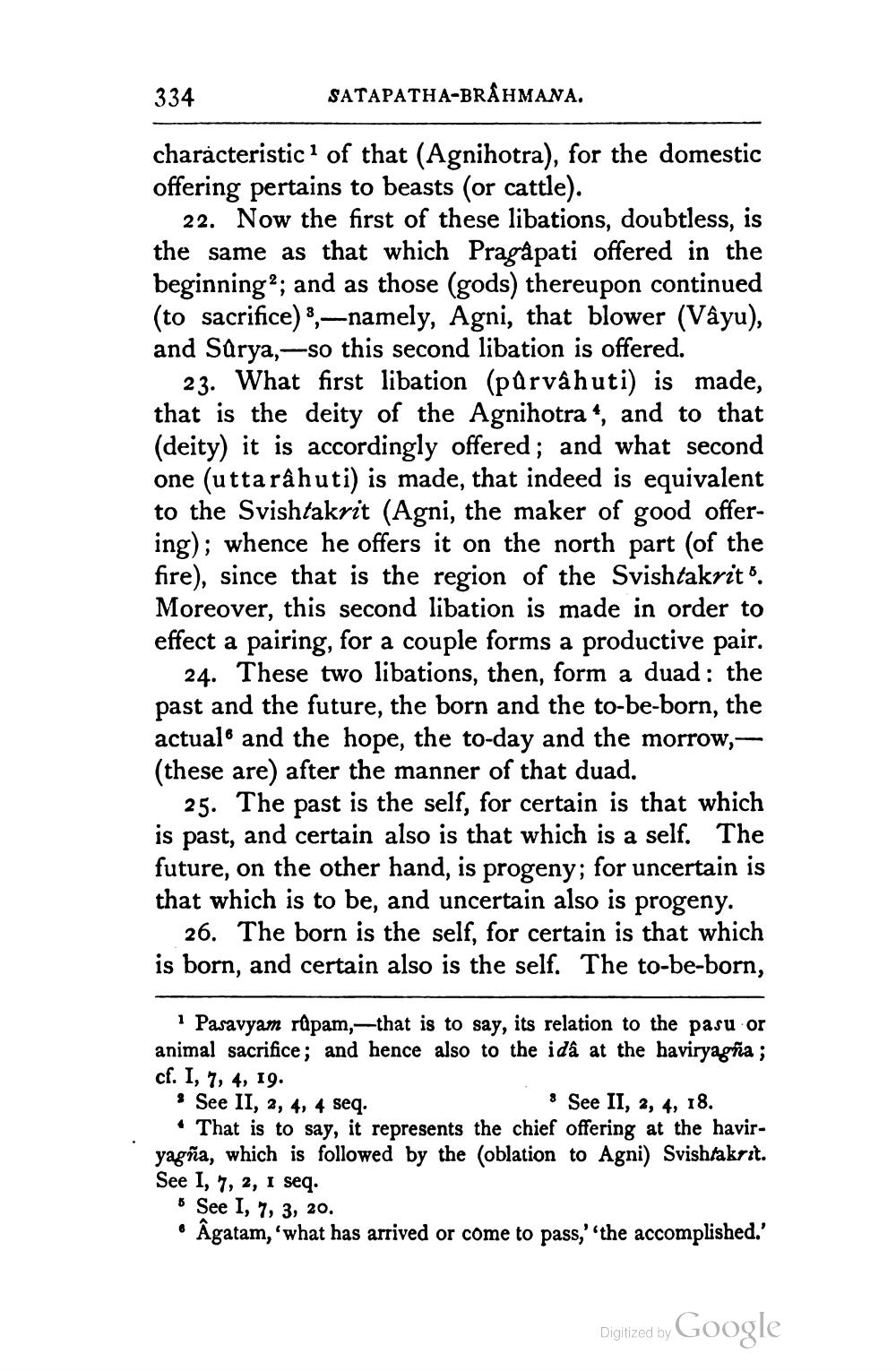________________
334
SATAPATHA-BRAHMANA.
characteristic of that (Agnihotra), for the domestic offering pertains to beasts (or cattle).
22. Now the first of these libations, doubtless, is the same as that which Pragapati offered in the beginning?; and as those (gods) thereupon continued (to sacrifice) *, -namely, Agni, that blower (Vayu), and Sarya,-so this second libation is offered.
23. What first libation (pūrvâ huti) is made, that is the deity of the Agnihotra“, and to that (deity) it is accordingly offered; and what second one (utta râhuti) is made, that indeed is equivalent to the Svishtakrit (Agni, the maker of good offering); whence he offers it on the north part (of the fire), since that is the region of the Svishtakrito. Moreover, this second libation is made in order to effect a pairing, for a couple forms a productive pair.
24. These two libations, then, form a duad: the past and the future, the born and the to-be-born, the actual and the hope, the to-day and the morrow,— (these are) after the manner of that duad.
25. The past is the self, for certain is that which is past, and certain also is that which is a self. The future, on the other hand, is progeny; for uncertain is that which is to be, and uncertain also is progeny.
26. The born is the self, for certain is that which is born, and certain also is the self. The to-be-born,
Pasavyam rūpam,—that is to say, its relation to the pasu or animal sacrifice; and hence also to the idâ at the haviryagña; cf. I, 7, 4, 19. See II, 2, 4, 4 seq.
8 See II, 2, 4, 18. That is to say, it represents the chief offering at the haviryagña, which is followed by the (oblation to Agni) Svishtakrit. See I, 7, 2, I seq.
* See I, 7, 3, 20. • Âgatam, 'what has arrived or come to pass,''the accomplished.'
Digitized by Google




